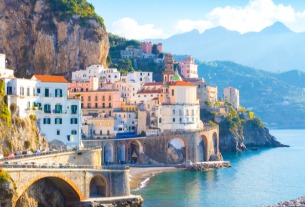If you haven’t played, or at least heard about, Pokemon Go, you may soon be in the minority. Not only has it single-handedly brought gaming giant Nintendo back to life but sparked conversations about the future of augmented reality (AR).
It may not be obvious, but the popularity of Pokemon Go could in fact be the harbinger of a revolution in travel.
That was then
Travel has always been influenced by new technologies, from planes, trains and automobiles to the web and now to new types of online interaction.
Look at how the early internet caused a shift from offline to online travel agencies and created an entirely new dynamic for hoteliers and airlines to market and price their services.
The web also changed traveler habits. Take Couchsurfing and Airbnb. The concept of staying overnight in a person’s home when traveling isn’t new – people have been doing that for millennia. What is novel is the creation of a virtual environment that facilitates interactions and connections.
Now there are more than 40,000 places to stay on Airbnb in New York City, compared with 110,000 hotel rooms in the Big Apple. This means more people are visiting New York City who could not previously afford it, putting downward pressure on hotel prices and causing ripple effects across the rest of the accommodations industry.
So what is the connection between Pokemon Go and today’s travel trends?
On the face of it, Pokemon Go is just another in a long list of games – think World of Warcraft andSecond Life – that is meant to keep people glued to screens so that they can spend time and money in a virtual world created by a profit-seeking entity such as Niantic, the game’s developer.
But what makes Pokemon Go different from its predecessors is that it hasn’t created a virtual world entirely separate from the real world, it has created a virtual world overlaid atop the real world, and it has done so exceptionally well.
This is now
Only in its first week of existence, the game has more than twice as many users as the dating app Tinder, and is on track to have more users than Twitter by week’s end, according to SimilarWeb.
But what does this mean for travel? Well, a lot.
The game has made it clear that it can encourage people to interact with the real world in ways they don’t normally do. Take for instance, the young woman in Wyoming who found a human cadaver floating in a river while playing the game.
Or take a stroll through Central Park or Times Square to see how many people are spending their time hunting Pokémon there.
Who knows the extent to which people have already gone places they otherwise would not have, thanks to their having experimented in Pokemon Go’s AR.
In a matter of days, the game has proven itself capable of affecting real-world places by creating in-game reasons for being somewhere and there is great potential in this arena. People who own stores or sites in the real world can, for example, pay Nintendo approximately $1.19 per hour for “lures,” which encourage the spawning of valuable in-game creatures in a real world location. These lures create foot traffic and potential purchases in the real world.
Granted, it is unlikely that people will travel excessively long distances or plan vacations in order to augment their Pokémon collection – although stranger things have happened – but I am sure that there are creative people out there already looking at ways to use AR to persuade people to travel.
Pokemon Go is the strongest example yet of AR’s ability to affect real world behavior, and it is surely just the beginning for this promising, nascent technology. With over 100,000 virtual reality headsets shipped this year and kids spending the majority of their waking hours using handheld devices and playing in virtual worlds such as Minecraft, we know that increasingly more time will be spent connecting in a world not limited by physical distances.
So, from the Wright Brothers to Web 1.0 OTAs to Airbnb to Pokemon Go, the trend so far has been that as we’ve identified and overcame limitations we have increased how much we travel.
As ever, the quickest to adapt to these massive new trends are the ones who will benefit the most. Kudos to the ingenious man in Portland, Oregon who had the idea to charge Pokemon Go players to be driven around in his car while taking them on what he calls a “Pokemon Safari,” so that they can capture Pokemon without having to worry about the hassle of driving.
How’s that for changing the way people travel?
Read original article




